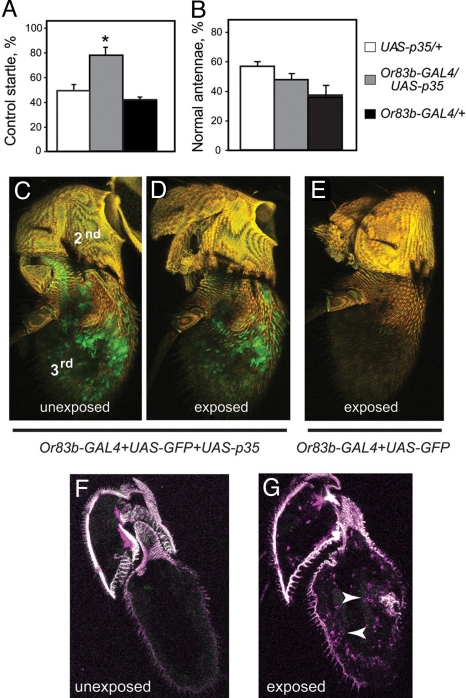Fig. 3.
Ethanol-induced olfactory damage occurs by apoptosis. (A) Expression of p35 in ≈80% of ORNs using the Or83b-GAL4 driver protects flies from loss of olfactory startle caused by a single ethanol preexposure delivered 2 days before testing (n = 8, *, P < 0.01). Data are presented as the % of maximum startle response in preexposed flies relative to that of unexposed controls of the same genotype. (B) Expression of p35 in ORNs does not rescue antennal morphology in flies exposed to ethanol as in (A) (n = 8). (C and D) Confocal reconstruction of antennae from flies carrying Or83b-GAL4, UAS-GFP, and UAS-p35. Ethanol exposure did not cause loss of ORNs (D) in the third antennal segment as is seen in control flies not expressing p35 (E). Green, GFP; yellow, autofluorescence of the cuticle. (F and G) Sections of antennae from a fly preexposed to ethanol shows an increase in TUNEL-positive nuclei (arrowheads in G) when compared to the unexposed control (F).

